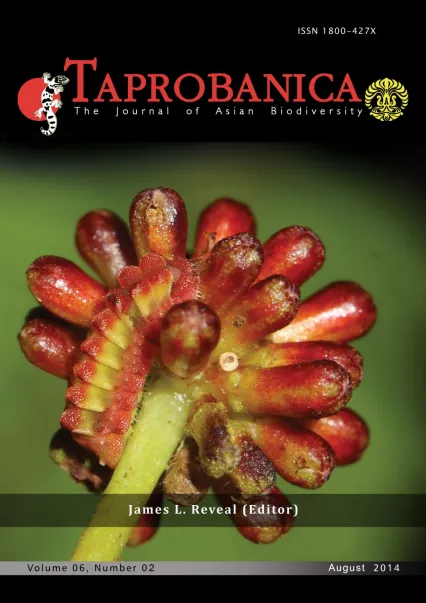

v6i2.141
Volume 6 | Number 2 | November 2014
Major Article
ISSN: 1800-427X (print)
eISSN: 1800-427X (online)
DOI:10.47605/tapro.v6i2.141
Submitted date: 13 March 2013
Accepted date: 25 April 2014
Published date: 30 August 2014
Pp. 90–99, pls. 7–8.
MELITTOPHILY AND MALACOPHILY IN Ipomoea pes-caprae (CONVOLVULACEAE)
A.J. Solomon Raju*, P. Suvarna Raju & K. Venkata Ramana
*Corresponding author. E-mail: ajsraju@yahoo.com
Abstract
Ipomoea pes-caprae is a mangrove associate often found along shorelines. It flowers during August–February and is hermaphroditic and an obligate out-crosser due to self-incompatibility. It is both melittophilous and malacophilous. The natural fruit set rate is less than 10% probably due to the wastage of pollen in self-pollination, the ephemeral nature of flowers, predation, and nutrient requirements. Seeds are impermeable to water and germinate readily if they are covered and abraded by sand; those exposed to seawater rot and subsequently perish. The low natural fruit set rate, the mortality of seeds and seedlings due to rotting, burial by sand, space constraint, and shading by established plants appear to be regulating the population size of I. pes-caprae. The plant also propagates vegetatively through the expansion of branches that are broken into fragments by storm waves, transported by water, and then washed onshore into new locations.
Key words : creeper, mangrove associate, post-zygotic self-incompatibility, vegetative propagation
Section Editor: James L. Reveal
eISSN: 1800-427X (online)
DOI:10.47605/tapro.v6i2.141
Submitted date: 13 March 2013
Accepted date: 25 April 2014
Published date: 30 August 2014
Pp. 90–99, pls. 7–8.
MELITTOPHILY AND MALACOPHILY IN Ipomoea pes-caprae (CONVOLVULACEAE)
A.J. Solomon Raju*, P. Suvarna Raju & K. Venkata Ramana
*Corresponding author. E-mail: ajsraju@yahoo.com
Abstract
Ipomoea pes-caprae is a mangrove associate often found along shorelines. It flowers during August–February and is hermaphroditic and an obligate out-crosser due to self-incompatibility. It is both melittophilous and malacophilous. The natural fruit set rate is less than 10% probably due to the wastage of pollen in self-pollination, the ephemeral nature of flowers, predation, and nutrient requirements. Seeds are impermeable to water and germinate readily if they are covered and abraded by sand; those exposed to seawater rot and subsequently perish. The low natural fruit set rate, the mortality of seeds and seedlings due to rotting, burial by sand, space constraint, and shading by established plants appear to be regulating the population size of I. pes-caprae. The plant also propagates vegetatively through the expansion of branches that are broken into fragments by storm waves, transported by water, and then washed onshore into new locations.
Key words : creeper, mangrove associate, post-zygotic self-incompatibility, vegetative propagation
Section Editor: James L. Reveal
- List of Articles & Contents





